I. Understanding DIY Concrete Countertops
As the name suggests, concrete countertops are made from a mix of cement and other materials such as sand, pigments, and aggregate to form a solid surface that is versatile in terms of design and durable enough for daily use. They are handcrafted by artisans or professionals who specialize in DIY concrete countertops that are poured in place.
A. What are DIY concrete countertops?
Poured concrete countertops have emerged as an alternative to traditional countertop materials like granite or marble due to their flexibility in design and durability. Unlike mass-produced countertop options, each DIY poured concrete countertop is unique – crafted individually according to specific measurements and designs. The artisan can incorporate various colors, textures, finishes into the final product which allows homeowners or designers plenty of creative freedom when incorporating these pieces into their spaces.
B. Benefits of choosing concrete countertops
The benefits associated with choosing concrete for your countertops extend beyond just aesthetics. Firstly, they offer unparalleled durability – able to withstand high temperatures without damage or deformation; ideal for kitchens where hot pots may be placed directly on the surface frequently. Secondly, they require minimal maintenance – requiring only occasional sealing rather than frequent resealing like some natural stone options do.
Moreover, because each piece is custom-made it means you can achieve any shape or size required making them perfect for unconventional layouts or intricate designs that may not be possible with other types of counters.
II. Necessary Materials and Tools
Constructing DIY concrete countertops is not a task that can be accomplished without proper planning and the right materials. Understanding what you need before beginning your DIY concrete countertops project will save time, effort, and frustration.
A. List of Required Materials for Concrete Countertops
The first step in making your own poured concrete countertop is to gather all necessary materials. This includes high-quality concrete mix designed specifically for countertops, reinforcement material such as wire mesh or rebar, sealant to protect the finished surface, and color pigments if desired. Additionally, it’s crucial to have a mold prepared; this could be made from melamine-coated particleboard or rubber depending on personal preference.
B. Essential Tools Needed in the Process
Along with the raw materials mentioned above, certain tools are indispensable when constructing a concrete countertop. These include a mixer for combining your concrete mix (a simple drill with paddle attachment can work), trowels for spreading and smoothing out the mixture into your mold, sandpaper or an orbital sander for finishing touches once cured, and safety equipment like gloves and goggles to protect yourself during construction process.
III. Preparing Your Kitchen Space
The first step in any kitchen remodeling project is preparing your space. This involves a few crucial steps that will protect your home and ensure the successful installation of your new countertop.
A. Protecting Your Cabinets and Floors
To avoid unnecessary damage, it’s essential to safeguard your cabinets and floors before starting the project. Use drop cloths or plastic sheeting to cover these areas, securing them with painter’s tape for added protection against dust, debris, or potential scratches during the process. Consider using cardboard along high-traffic paths to prevent wear on flooring from foot traffic or dropped tools.
B. Removing Old Countertop (If Necessary)
If you’re replacing an old countertop, careful removal is necessary to maintain the integrity of surrounding structures like cabinets or backsplashes. Start by disconnecting any plumbing fixtures attached to the counter such as sinks or faucets then use a utility knife around edges where caulk may have been applied for sealing purposes; this makes removing countertops easier without causing unwanted damage.
C. Measuring and Creating a Template
The final preparation stage involves measuring your existing countertop area accurately and creating a template if needed for custom designs. Utilize accurate measurements not only of length but also depth and height – considering elements like appliances or windowsills which might affect fitting – ensuring perfect fitment when installing new countertops into place later on.
IV. Pouring the Concrete
In this section, we will explore the crucial steps of pouring concrete in place, which include mixing it properly, mastering the technique for a smooth finish, and leveling and removing air bubbles.
A. Mixing the Concrete Properly
The first step in pouring concrete is to ensure that it’s mixed correctly. The right consistency can make or break your project. It’s essential to add just enough water – not too much as it weakens the mixture and not too little as it makes spreading difficult. Moreover, you need to mix thoroughly until all components are evenly distributed throughout the batch.
B. Pouring Technique for a Smooth Finish
Once your concrete mix is ready, perfecting your pour is paramount for achieving a smooth finish. You should start at one end of your formwork and move steadily towards the other end while maintaining control over how quickly or slowly you’re pouring. This steady pace prevents forming mounds or dips in your surface that would be challenging to level out later on.
C. Leveling and Removing Air Bubbles
Last but certainly not least comes leveling and removing air bubbles from poured concrete – two critical aspects of ensuring its strength and durability once dried up. Use screeds or trowels to spread out any excess material across surfaces uniformly while pressing down slightly into corners to eliminate trapped air pockets underneath layers of wet cement.
Remember: patience is key here; don’t rush through these final steps because they directly affect how well-settled & solidified your finished product will be!
The Importance of Proper Curing Time
It is crucial to understand the significance of proper curing time when working with concrete. This DIY concrete countertop process involves keeping the concrete moist and at a suitable temperature for an extended period, which allows it to reach its maximum strength and durability. Neglecting this step can result in brittle or weak structures that are prone to cracking. Therefore, patience plays a key role during curing; rushing through this phase might compromise the quality of your work. The recommended duration varies depending on several factors like weather conditions and type of cement used but generally ranges from three days to a week.
How to Polish for a Professional Look
Polishing is another vital step in achieving professional-looking concrete surfaces. It not only enhances aesthetic appeal but also improves resistance against wear and tear over time. To begin polishing, you need specialized tools such as grinders fitted with diamond abrasive discs or pads. Start by grinding down any rough spots using coarse grits before moving onto finer ones for smoother finishes. Remember always to keep the surface wet during polishing to prevent dust formation and ensure uniform results.
Choosing the Right Sealant
Picking out the right sealant can make all the difference in preserving your polished concrete’s appearance and longevity. A good-quality sealant will provide protection against stains, moisture penetration, UV damage, among other things – ensuring that your hard work lasts longer while maintaining its fresh look over time.
When choosing a sealant, consider factors like indoor versus outdoor use (as some products are specifically designed for one environment), level of traffic exposure (high-traffic areas require more durable sealants), desired finish (glossy or matte), etc.
In conclusion, selecting an appropriate sealing product is just as critical as properly curing or polishing your concrete surface.
VI. Tips For Maintaining Your New Concrete Countertop
A. Regular Cleaning Advice
Maintaining your new DIY concrete countertop starts with regular cleaning. Use a mild, non-abrasive cleaner for daily upkeep to avoid scratching or damaging the surface. Avoid using harsh chemicals as they can erode the sealant and expose the underlying concrete to stains and damage. Wipe up spills promptly to prevent them from seeping into the pores of the concrete, which can cause discoloration.
B. Avoidance From Certain Substances Or Actions
Certain substances such as vinegar, lemon juice or other acidic foods can etch concrete surfaces if left unattended for long periods of time, so be sure to clean these up immediately if spilled. Additionally, avoid placing hot pots directly on your countertop; use trivets or pot holders instead as extreme heat may cause cracking in your countertop over time.
VII. Common Mistakes To Avoid When Pouring In Place
A. Inadequate Preparation Before Pouring
One common mistake when pouring a concrete countertop is inadequate preparation before pouring begins – this includes not properly cleaning and preparing your forms, not ensuring that they are level and stable enough to hold the weight of wet cement without shifting or warping during curing process.
B. Improper Mixing Of Components
Another frequent error involves improper mixing of components – it’s crucial that you follow manufacturer’s instructions exactly when mixing cement powder with water because too much water will weaken final product while insufficient amount might lead to an unevenly cured counter with potential cracks.
C. Incorrect Sealing Methods
Finally, incorrect sealing methods can lead to problems down the line. Concrete countertops need to be sealed properly in order to prevent water and stain penetration. Using an improper sealer or applying it incorrectly may result in a countertop that is susceptible to stains and damage.
VIII. Conclusion: Enjoy Your DIY Concrete Countertop
In conclusion, making your own poured concrete countertop in place can be a rewarding experience. Not only does it allow you to customize the look and feel of your kitchen or bathroom, but it also provides an opportunity for hands-on creativity and craftsmanship.
By following the outlined steps carefully, using quality materials, and dedicating time to perfect each phase of the process, you can create a durable and beautiful poured concrete countertop that will stand up to daily use for years to come. This project may require patience and hard work; however, the end result is certainly worth all efforts invested. Now that you’ve completed this task successfully, sit back and enjoy your new DIY concrete countertop! If you want a professionals help, find one today!



























